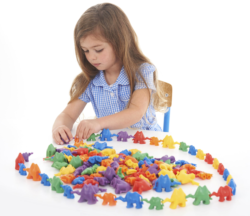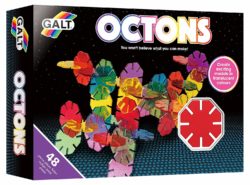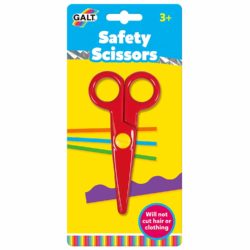No products in the cart.
Special Needs Toys
Dyspraxia
Discover our carefully selected resources to help children with dyspraxia.
FILTER
Age
- 1
- 2
- 3
- 4
- 5
- 6
- 7
- 8
- 9
- 10
- 11
- 12+
Product Type
- Accessories
- Arts & Crafts
- Books
- Flashcards & Wipe-Clean
- Games
- Jigsaws & Puzzles
- Learning Resources
- Toys
Stage
- Babies
- Early Years
- Primary KS1
- Primary KS2
- Toddlers
Skill
- Communication Skills
- Creativity
- Discovering the World
- Fine Motor Skills
- Health & Self-care
- Imagination
- Independent Learning
- Languages
- Listening
- Literacy
- Managing Feelings
- Mathematical Skills
- Memory
- Mindfulness
- Observational Skills
- Physical Development
- Problem Solving
- Reading
- Scientific Skills
- Self-assessment
- Self-confidence
- Social Skills
- Speaking
- Thinking Skills
- Understanding
- Writing
Areas of Learning
- Arts and Design
- Communication & Language
- Literacy
- Mathematics
- Personal, Social & Emotional Development
- Physical Development & Fine Motor Skills
- Understanding the World
Subject
- Arts and Design
- Design & Technology (DT)
- English
- Geography
- History
- ICT
- Languages (MFL)
- Mathematics
- Physical Education (PE)
- Science
Languages
- Arabic
- Bilingual
- English
- French
- German
- Mandarin Chinese
- Polish
- Russian
- Spanish
- Welsh
Brand
- 25th Century Games
- 4M
- Abrams Books
- Action Phase Games
- Alderac Entertainment Group
- Alley Cat Games
- Amazing Tales
- Andersen Press
- Andrew Brodie Publications
- Arcane Tinmen
- Arcane Wonders
- Ares Games
- Asmodee Editions
- Atlas Games
- Atomic Mass Games
- Awaken Realms
- b small publishing
- Baby Einstein
- Bandai
- Barefoot Books
- Barrington Stoke
- Battlefront Miniatures
- Beehive Toys
- Bezier Games
- Bezzerwizzer
- Big G Creative
- Big Sky Games
- BigJigs Toys
- Blackrock Editions
- Bloomsbury
- Blue Cocker Games
- Blue Orange
- Board And Dice
- Board Game Hub
- Bombyx
- Boxer Books
- BrainBox
- Brother Wize Games
- Bushiroad
- Buster Books
- Cambridge Brainbox
- Candylab
- Capstone Games
- Catan Studios
- Cephalofair Games
- Cheapass Games
- Chessex
- Chronicle Books
- Cicada
- Cool Mini Or Not Inc
- Curiscope
- CWR
- Dantoy
- Didicar
- DK
- DT
- EDU-QI
- EDUPLAY
- Edx Education
- Egmont
- Emaan Productions
- Faber & Faber
- Fat Brain Toys
- Fine Feather Press
- Flying Eye
- Galison Mudpuppy
- Galt Toys
- Gamelyn Games
- Gamewright
- Gecko Press
- GeoSmart
- Gigamic
- GoGo
- Gowi Toys
- Graffeg
- Great Gizmos
- Green Toys
- HABA
- Hape
- Happy Cube
- Hinkler Books
- Horrible Games
- Ivy Kids
- Jar Meló
- Klutz
- Knowledge Builder
- Kumon Publishing
- Lanka Kade
- LeapFrog
- Learning Resources
- Lerner
- Letterland
- Lexie Mouse Publishing
- Lincoln Children's Books
- Little Island
- Little Tiger
- Little Wise Toys
- LOM Art
- Lonely Planet
- Lottie
- Mad Mattr
- Magic Cat
- Make It Real
- Mary Meyer
- masterkidz
- Melissa & Doug
- Michael O'Mara
- MindWare
- Mobilo
- MOLUK
- Moondance Press
- Morphun
- nanoblock
- Nebulous Stars
- Nosy Crow
- Orchard Toys
- Otter-Barry Books
- Page Street Publishing
- Paul Lamond
- Pavilion
- Petit Collage
- Plan Toys
- Playcolor
- Playmobil
- Poptacular
- Primo
- Princeton Architectural Press
- QED
- Quercetti
- Raintree
- Renegade Game Studio
- Rubbabu
- Rubik's
- Santoys
- Sassi
- Scallywag
- Schofield & Sims
- Scholastic
- Scrunch
- Shade 7 Publishing
- Shaw Magnets
- Skillmatics
- Skip Hop
- Smart Games
- Smartivity
- SmartMax
- Sourcebooks
- Storey Publishing
- Tactic
- Tate Publishing
- The Green Board Games Co
- The Puppet Company
- TickIT
- Tidlo
- Top Class
- Twirl Publishing
- Usborne
- Verdes Innovations
- Viga
- Walker Books
- Welbeck
- What on Earth
- Wide Eyed Editions
- Wilberry
- Wiz Kids LLC
- words & pictures
- WordUnited
- Workman Publishing
- Yoyo Books
- Z-Man
- ZooBooKoo
Stock status
- In Stock
- Out of Stock
Showing 1–12 of 341 results
-


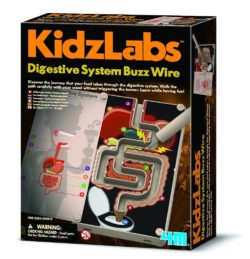

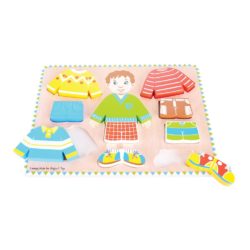

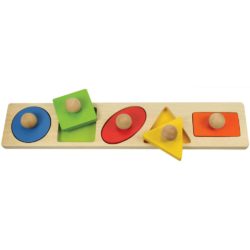

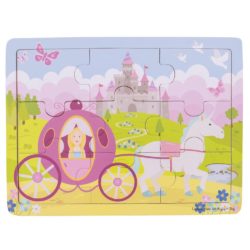

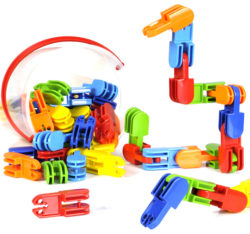

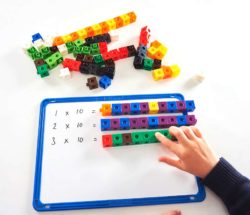

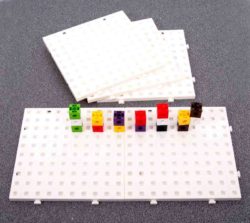

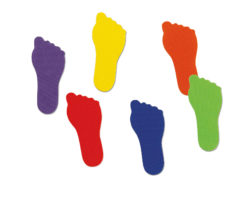

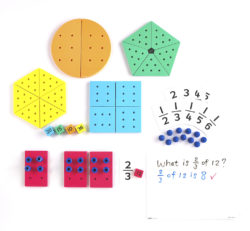
Dyspraxia in children
Dyspraxia, known officially as developmental coordination disorder (DCD), is a neurological, motor planning disorder that affects a person’s movements and coordination. There is a wide variety of symptoms of dyspraxia in children, but they usually include trouble with daily movements, such as walking, a lack of coordination, and difficulty with simple fine motor activities.
Dyspraxia fine motor skills
Dyspraxia in children often results in them having difficulty in performing fine motor skills activities. Symptoms of dyspraxia in childrenare varied and usually manifest as behaviours rather than visible physical signs as with other conditions. These symptoms may be related to speaking and communication difficulties (oral dyspraxia), poor mouth control (verbal), trouble turning thoughts to movements (motor), difficulty breaking down tasks into smaller actions and movements (idea), difficulty understanding patterns and arranging objects (space).
Children with dyspraxia may, therefore, lag in school and learn to write later than usual. They may also have poor hand-eye coordination, which negatively affects everyday tasks like tying shoelaces and brushing teeth. This can adversely affect a child’s abilities in school, academic learning, social skills and emotions. Children special needs and dyspraxia can benefit from toys that promote fine motor skills.
How to help a child with dyspraxia
There is no cure for dyspraxia, but children can benefit immensely from therapies and motor skills exercises that enable them to live better with the condition. Therapy treatment for dyspraxia is based around the use of dyspraxia toys in breaking down complex fine motor activities into simple ones and encouraging children to practice them repeatedly. This repeated learning helps their brains make new and effective nerve connections children and, therefore, learn the skills they need.
Repetition, positive feedback and encouragement are the primary therapy tools for dyspraxia in children. The best way that you can help your child is to encourage them, positively and patiently, to keep learning the challenging fine motor activities, and to give them praise for any small advances they make. You also need to realize that the things that you think are easy to learn may be much more difficult for your child. They won’t get better at the things that they give up but will get better at the activities they pursue.
Early diagnosis of dyspraxia in children makes it possible to start treatment early. Treatment is primarily focused on improving dyspraxia fine motor skills through constant practice. As children get older, parents need to be aware of the issues that are likely to affect children with dyspraxia and get ahead of such problems. This awareness will help children to overcome their challenges, reduce the effects of their condition, and help them to perform as well as their peers.
It’s essential to make the tasks that you assign to your child gradually become more advanced. You should aim to challenge your child so that they improve, but not so much that they become overwhelmed by the tasks. Learning a musical instrument may be one of the best therapies fordyspraxia in children. It’s particularly useful since it involves repeated practice that improves motor skills, coordination, and memory. It’s essential, however, to make sure that your child is interested in learning the instrument, and not force it on them. It is also useful to build in rewards to have success with this.
Verbal dyspraxia is treated by teaching children to form words in their minds first, to help them become less frustrated when they are trying to communicate. Most children will improve through repeating a variety of tasks that are designed to help them improve their speaking skills. It takes a great deal of effort for most children with dyspraxia to learn to write legibly and build up writing speed. Children with dyspraxia may learn to write faster with if they start with wide-barrelled pencils. Square-lined paper can help them to place and space letters and numbers better. As with all the other fine motor skills activities, repetition, positive feedback and encouragement are vital. You may also offer extended and flexible deadlines for homework so that your child does not get frustrated.
Another way to help kids with dyspraxia is to use their playtime for physical activities like skipping rope and team ball games. Parents should generously praise their children for any small improvements they make. Hand-eye coordination, perceptual and spatial skill scan be improved by with fine motor skills toys like jigsaws, construction blocks, and mazes, to make learning fun and rewarding. Children can also carry out motor skills exercisesand improve their concentration, and problem-solving skills by using toys such as wobble boards, lacing and threading, sorting objects using tweezers. Children with dyspraxia are most likely not to like these types of tasks, but it is vital to encourage them.
Regardless of the fine motor skills activitiesyou eventually choose for your child, it is vital that you encourage them to practise. This repetition of tasks creates new nerve pathways that make it easier for your child to perform them. Children with dyspraxia also gain a lot from receiving extra help with their schoolwork. They need to be encouraged and given time to do the tasks that they find challenging, and not let them avoid such activities.



 01782 698558
01782 698558


